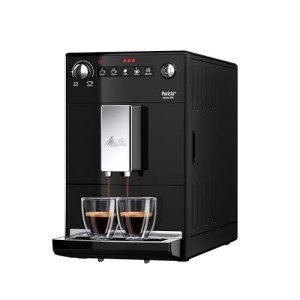Heat Exchange Espresso Machines: A Comprehensive Guide
Espresso machines have actually developed considerably over the years, catering to the requirements of home baristas and coffee specialists alike. Amongst these machines, heat exchange espresso machines have acquired popularity due to their ability to provide constant efficiency and extraordinary brew quality. In this short article, we will check out the workings, advantages, and crucial functions of heat exchange espresso machines, supplying an extensive understanding for both potential buyers and coffee enthusiasts.
Understanding Heat Exchange Technology
Heat exchange espresso machines run on a special concept that allows simultaneous water heating for developing and steaming. Espresso Machines Under £500 are equipped with a single boiler that utilizes a heat exchanger system. This feature is significant as it enables users to brew espresso while steaming milk concurrently, promoting effectiveness in the coffee-making process.
How Does a Heat Exchange Espresso Machine Work?
The procedure starts with the machine's water inlet filling the boiler. As the water heats up, it turns to steam. The innovative heat exchanger utilizes hot steam to heat additional water in a separate passage designed particularly for the brew group. This means that water can reach the ideal developing temperature level without waiting on the boiler to change. The key actions include:
- Water Fill: Water is drawn into the boiler.
- Heating Process: The boiler warms up as water is converted into steam.
- Heat Exchange: Steam heats water in the heat exchanger tube.
- Brewing: Water from the heat exchanger is pushed through coffee premises, extracting the tastes needed for an abundant espresso.
This procedure permits fast temperature adjustments and improved coffee extraction.
Advantages of Heat Exchange Espresso Machines
Heat exchange espresso machines use numerous benefits, especially for those looking to maximize their coffee experience. Here are some key benefits:
- Simultaneous Brewing and Steaming: Users can brew espresso while steaming milk, making it perfect for hectic coffee shops and home baristas who value effectiveness.
- Temperature level Stability: The boiler's steam pressure helps preserve a steady temperature, which is critical for consistent espresso extraction.
- Flexibility: The style permits fast switching between brewing and steaming, making it much easier to create different coffee beverages, from lattes to cappuccinos.
- User-friendly: Models frequently feature available controls, making it possible for both newbies and skilled baristas to produce quality beverages.
- Professional Quality: Heat exchange machines are frequently utilized in commercial settings, supplying users with high-quality developing performance in the house.
Secret Features to Look for in Heat Exchange Espresso Machines
When thinking about the purchase of a heat exchange espresso machine, there are several features that one ought to consider:
- Build Quality: Look for machines made of long lasting materials, such as stainless-steel or brass, making sure durability.
- Boiler Size: A larger boiler will hold more water and sustain greater output gradually.
- PID Temperature Control: This function assists preserve constant brew temperatures, which can improve the coffee-making process.
- Group Head Design: Machines with a saturated or semi-saturated group head offer much better temperature level stability.
- Ease of Use: User-friendly interfaces and instinctive controls improve the total experience for baristas at all skill levels.
- Steam Wand Quality: An excellent steam wand with correct insulation and flexibility permits better texturing of milk.
- Water Reservoir Size: Depending on your requirements, consider how frequently you wish to fill up the water tank.
Contrast of Popular Heat Exchange Espresso Machines
To much better comprehend the choices offered in the market, below is a comparison table of some popular heat exchange espresso machines:
| Machine Model | Boiler Size | PID Control | Cost Range | User Ratings |
|---|---|---|---|---|
| Profitec Pro 700 | 2.0 L | Yes | ₤ 2,000-₤ 2,500 | 9.5/ 10 |
| Rocket Espresso R58 | 1.8 L | Yes | ₤ 2,400-₤ 2,800 | 9.4/ 10 |
| Elekta Bianca | 1.8 L | Yes | ₤ 2,500-₤ 3,000 | 9.6/ 10 |
| La Spaziale S1 Vivaldi II | 1.5 L | Yes | ₤ 1,800-₤ 2,200 | 9.2/ 10 |
| Bezzera Magica | 1.2 L | No | ₤ 1,600-₤ 1,800 | 9.0/ 10 |
Frequently Asked Questions About Heat Exchange Espresso Machines
What is the main distinction between a heat exchange and a dual boiler espresso machine?
While both types can brew espresso and steam milk at the exact same time, dual boiler machines have different boilers for brewing and steaming. In contrast, heat exchange machines make use of a single boiler and a heat exchanger to achieve the exact same function.
Are heat exchange machines ideal for novices?
Yes! Lots of heat exchange machines are created with user-friendly features, making them available for beginners. With correct guidance and practice, users can rapidly produce quality espresso.
What type of maintenance do heat exchange espresso machines require?
Regular maintenance consists of descaling, cleaning the boiler, checking seals and gaskets, and keeping the group head clean. Regular maintenance ensures durability and constant efficiency.
Can I use a heat exchange machine for various types of coffee drinks?
Absolutely! Heat exchange machines permit users to create a variety of coffee beverages, consisting of espresso, lattes, coffees, and more.
Heat exchange espresso machines represent a mix of development and tradition, offering coffee lovers with the tools required for crafting the ideal cup. Their capability to concurrently brew and steam, integrated with precise temperature control, makes them a compelling choice for both home baristas and experts. With the ideal knowledge on features and upkeep, users can unlock a world of beautiful coffee experiences, guaranteeing that each sip is as delightful as the last.

